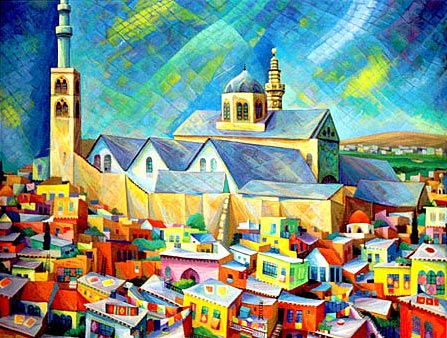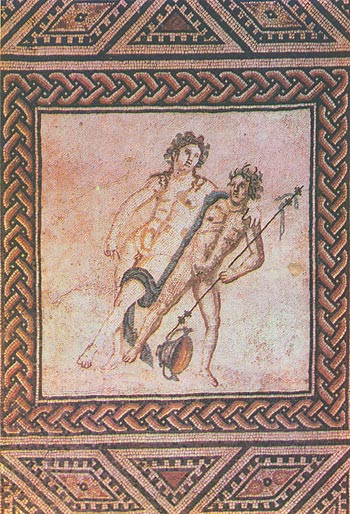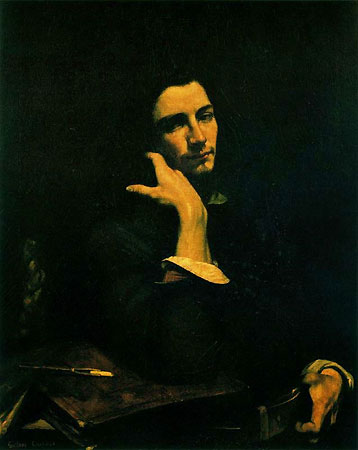altars of the world
Romanticism
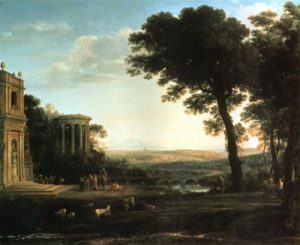 Romanticism (French romantisme from the Latin. Roman romanum from Roma – Rome) is one of two, along with Classicism, the fundamental tendencies of artistic thinking. However, historically, this word has been called a wide range of various phenomena. At the end of the 18th century, everything extraordinary, fantastic, what happens “like in novels” was called romantic or “romance”. Romantic, sublime poetry was then considered the only worthy type of art. But there was another interpretation of the term: romantic – this is the art of the Romance peoples, mainly medieval, which was opposed to the classical, ancient. Continue reading
Romanticism (French romantisme from the Latin. Roman romanum from Roma – Rome) is one of two, along with Classicism, the fundamental tendencies of artistic thinking. However, historically, this word has been called a wide range of various phenomena. At the end of the 18th century, everything extraordinary, fantastic, what happens “like in novels” was called romantic or “romance”. Romantic, sublime poetry was then considered the only worthy type of art. But there was another interpretation of the term: romantic – this is the art of the Romance peoples, mainly medieval, which was opposed to the classical, ancient. Continue reading
Impressionism
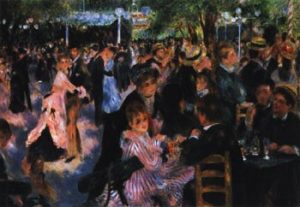 Renoir Pierre Auguste. The Ball in Moulin de la Galette Impressionism (Fr. Impressionisme, from impression – impression) is the artistic style in the art of the last third of the XIX – early XX centuries, which had a great influence on all subsequent art. Impressionism is a purely French phenomenon, although English landscape painters J. Constable and W. Turner are considered its predecessors. Continue reading
Renoir Pierre Auguste. The Ball in Moulin de la Galette Impressionism (Fr. Impressionisme, from impression – impression) is the artistic style in the art of the last third of the XIX – early XX centuries, which had a great influence on all subsequent art. Impressionism is a purely French phenomenon, although English landscape painters J. Constable and W. Turner are considered its predecessors. Continue reading
Gothic
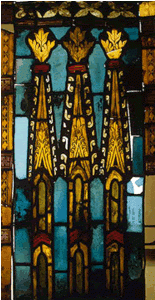 Stained glass window, fragment with architectural ornament. Colored glass, painting, lead. Germany. Late 14th century. The Gothic style is an artistic style that was the final stage in the development of the Middle Ages of art of the countries of Western, Central and partially Eastern Europe (between the mid 12th and 16th centuries). The term “Gothic” was introduced into the Renaissance as a derogatory designation of all medieval art, which was considered “barbaric”. From the beginning of the 19th century, when the term Romanesque was adopted for art, the chronological framework of the Gothic style was limited, it marked the early, mature (high) and late phases. Continue reading
Stained glass window, fragment with architectural ornament. Colored glass, painting, lead. Germany. Late 14th century. The Gothic style is an artistic style that was the final stage in the development of the Middle Ages of art of the countries of Western, Central and partially Eastern Europe (between the mid 12th and 16th centuries). The term “Gothic” was introduced into the Renaissance as a derogatory designation of all medieval art, which was considered “barbaric”. From the beginning of the 19th century, when the term Romanesque was adopted for art, the chronological framework of the Gothic style was limited, it marked the early, mature (high) and late phases. Continue reading
